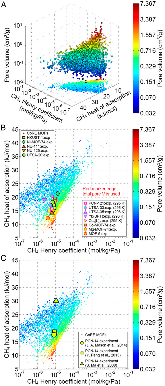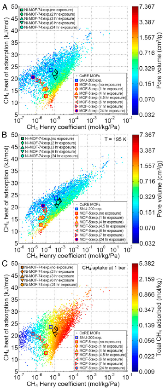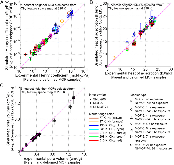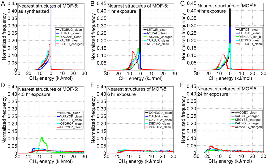Modeling adsorption properties of structurally deformed metal–organic frameworks using structure–property map
- Korea Advanced Inst. Science and Technology (KAIST), Daejeon (Korea, Republic of). Dept. of Chemical and Biomolecular Engineering
- Kyoto Univ. (Japan). Graduate School of Science, Div. of Chemistry
- Gachon Univ., Sungnam (Republic of Korea). Dept. of Nanochemistry, College of Bionano
- Saudi Arabian Oil Co., Dhahran (Saudi Arabia). R&D Center
- Seoul National Univ. (Korea, Republic of). Dept. of Chemistry
Structural deformation and collapse in metal-organic frameworks (MOFs) can lead to loss of long-range order, making it a challenge to model these amorphous materials using conventional computational methods. In this work, we show that a structure–property map consisting of simulated data for crystalline MOFs can be used to indirectly obtain adsorption properties of structurally deformed MOFs. The structure–property map (with dimensions such as Henry coefficient, heat of adsorption, and pore volume) was constructed using a large data set of over 12000 crystalline MOFs from molecular simulations. By mapping the experimental data points of deformed SNU-200, MOF-5, and Ni-MOF-74 onto this structure–property map, we show that the experimentally deformed MOFs share similar adsorption properties with their nearest neighbor crystalline structures. Furthermore, once the nearest neighbor crystalline MOFs for a deformed MOF are selected from a structure–property map at a specific condition, then the adsorption properties of these MOFs can be successfully transformed onto the degraded MOFs, leading to a new way to obtain properties of materials whose structural information is lost.
- Research Organization:
- Lawrence Berkeley National Laboratory (LBNL), Berkeley, CA (United States). National Energy Research Scientific Computing Center (NERSC)
- Sponsoring Organization:
- USDOE Office of Science (SC)
- Grant/Contract Number:
- AC02-05CH11231
- OSTI ID:
- 1498118
- Journal Information:
- Proceedings of the National Academy of Sciences of the United States of America, Vol. 114, Issue 30; ISSN 0027-8424
- Publisher:
- National Academy of Sciences, Washington, DC (United States)Copyright Statement
- Country of Publication:
- United States
- Language:
- English
Web of Science
Liquid, glass and amorphous solid states of coordination polymers and metal–organic frameworks
|
journal | September 2018 |
Predicting performance limits of methane gas storage in zeolites with an artificial neural network
|
journal | January 2019 |
Regulation of the Degree of Interpenetration in Metal–Organic Frameworks
|
journal | December 2019 |
Inverse design of porous materials using artificial neural networks
|
journal | January 2020 |
Similar Records
Impedance-Based Detection of NO2 Using Ni-MOF-74: Influence of Competitive Gas Adsorption
Incorporating Flexibility Effects into Metal–Organic Framework Adsorption Simulations Using Different Models



